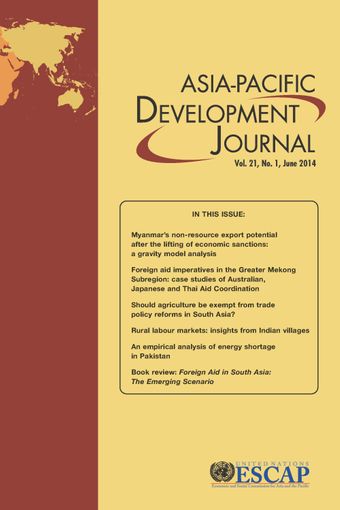-
Rural labour markets: Insights from Indian villages
- Source: Asia-Pacific Development Journal, Volume 21, Issue 1, Dec 2014, p. 107 - 136
-
- 05 Dec 2014
Abstract
In this paper, labour market behaviour in rural India is examined, with the objectives of assessing the structure of the work status among sample individuals and of testing segmented labour market theory. Simple regression techniques and an estimated modified Mincer equation to determine earnings are used in the paper, followed by the application of multinomial regression analysis. Labour markets are segmented based on social background to some extent, which is in line with segmented labour market theory based on caste, sex and assets. Most of the more highly educated remain unemployed due to a lack of sufficient employment opportunities, even though higher education increases the probability of being engaged in regular employment. However, households invest heavily in children’s education in the hope that they will obtain regular employment. Policies that promote asset ownership, household savings and skills development would increase people’s chances of obtaining regular employment with higher earnings.
© United Nations





